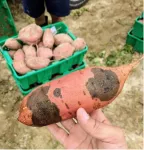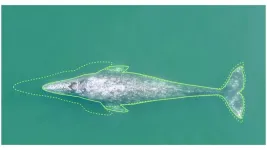(Press-News.org) COLUMBUS, Ohio – In response to stressful or dangerous stimuli, nerve cells in the spinal cord activate involuntary, autonomic reflexes often referred to as “fight or flight” responses.
These protective responses cause changes in blood pressure and the release of stress hormones into the blood stream. Normally, these responses are short-lived and well-controlled, but this changes after a traumatic spinal cord injury.
A first-ever study published in the journal Science Translational Research identifies a druggable cellular target that, if controlled properly, could prevent or lessen autonomic dysfunction and improve quality of life for people with spinal cord injury.
“We discovered that exaggerated, life-threatening autonomic reflexes after spinal cord injury are associated with abnormal growth and rewiring of nerve fibers in the spinal cord. A specific cell type, called microglia, control this abnormal growth and rewiring,” said corresponding author Phillip Popovich, PhD, professor and chair of the department of neuroscience at The Ohio State University Wexner Medical Center and College of Medicine.
“Using experimental tools to deplete microglia, we found it’s possible to prevent abnormal nerve growth, and prevent autonomic complications after spinal cord injury,” said Popovich, who also is executive director of Ohio State’s Belford Center for Spinal Cord Injury.
This research used a mouse model of spinal cord injury. However, abnormal, potentially life-threatening autonomic reflexes also occur in other animals and in people with spinal cord injury, said Popovich, who is also a member of Ohio State’s Institute for Behavioral Research Medicine.
Autonomic dysfunction or “dysautonomia,” is a major problem for people living with spinal cord injuries.
In people and animals with spinal cord injury, normally harmless stimuli, such as a full bladder, can suppress the body’s immune system and cause uncontrolled changes in blood pressure.
This leads to life threatening complications including heart attack, stroke, metabolic disease and severe infections, like pneumonia.
There is currently no treatment that prevents dysautonomia.
“We consider this a major finding,” said first author Faith Brennan, PhD, who began this work at Ohio State and is now a neuroscience researcher at Queen’s University in Kingston, Ontario. “Although this is a well-known consequence of spinal cord injury, research has mostly focused on how the injury affects neurons that control autonomic function.”
Improving autonomic function is a top priority for people living with spinal cord injury. Limiting the effects of dysautonomia after spinal cord injury would significantly increase quality of life and life expectancy, Popovich said.
Next steps for this research will focus on identifying the specific neuron-derived signals that control microglia, causing them to remodel spinal autonomic circuitry.
“Identifying these mechanisms could lead to the design of new, highly specific therapies to treat dysautonomia after spinal cord injury. It could also help in other neurological complications where dysautonomia develops, including multiple sclerosis, Alzheimer’s disease, Parkinson’s disease, stroke and traumatic brain injury,” Popovich said.
This research was supported by the National Institutes of Health, the Ray W. Poppleton Endowment, the Craig H. Neilsen Foundation and the Wings for Life Spinal Research Foundation.
###
END
Reno, Nev. (June 12, 2024) – The Western U.S. is heavily reliant on mountain snowpacks and their gradual melt for water storage and supply, and climate change is expected to upend the reliability of this natural process. Many agricultural communities in this part of the country are examining ways to adapt to a future with less water, and new research shows that a focus on supplementing water supply by expanding reservoir capacity won’t be enough to avert future water crises.
Led by scientists at the Desert Research Institute ...
EMBARGOED FOR RELEASE UNTIL 4 P.M. ET, WEDNESDAY, JUNE 12, 2024
MINNEAPOLIS – People who give birth to infants less than 5.5 pounds may be more likely to have memory and thinking problems later in life than people who give birth to infants who do not have a low birth weight, according to a study published in the June 12, 2024, online issue of Neurology®, the medical journal of the American Academy of Neurology. The effect on memory and thinking skills was equivalent to one to two years of aging for those with low-birth-weight deliveries.
The study does not prove that delivery of a low-birth-weight ...
EMBARGOED FOR RELEASE UNTIL 4 P.M. ET, WEDNESDAY, JUNE 12, 2024
MINNEAPOLIS – People who experience prolonged depressive symptoms starting in young adulthood may have worse thinking and memory skills in middle age, according to a study published in the June 12, 2024, online issue of Neurology®, the medical journal of the American Academy of Neurology. The study also found that depressive symptoms were experienced more often by Black adults than white adults.
“The processes that lead to dementia begin long before signs of the disease become apparent, and previous research has shown that Black adults have a higher risk of dementia than white adults,” said study author ...
Philadelphia (June 12, 2024) – A new study published in International Journal of Nursing Studies showed that individuals with Covid-19 were more likely to die in hospitals that were chronically understaffed before the pandemic. This study is one of the first to document the continuing public health dangers of permitting so many U.S. hospitals to ration nursing care by understaffing nursing services.
The study, conducted by researchers at the Center for Health Outcomes and Policy Research (CHOPR) at the University ...
By late in the pandemic more than 96% of individuals in the U.S. ages 16 and older had COVID-19 antibodies from infection or vaccination. However, immunity from the virus tends to wane over time. Uptake of the boosters has been quite low, meaning that over time the current high levels of protection will dissipate.
During the COVID-19 pandemic, at-home antigen tests became widely accepted for detecting infection. In a new joint study by the George Washington University, the University of North Carolina, and others, researchers looked into the benefits of using at-home antibody tests to detect immunity and to make decisions about the need for a COVID-19 booster shot - something ...
Sweetpotato black rot is a devastating disease caused by the fungus Ceratocystis fimbriata. Since the late 1800s, black rot of sweetpotato has threatened to destroy as much as 30% of the sweetpotato crop in the United States. In 2015, all sweetpotato-producing states in the United States experienced one of the worst outbreaks recorded in history, with up to 60% losses reported. While fungicides can help manage the disease, they are not a sustainable solution, especially with volatile restrictions on fungicide residues among major export markets. An additional ...
Gray whales that spend their summers feeding in the shallow waters off the Pacific Northwest coast have undergone a significant decline in body length since around the year 2000, a new Oregon State University study found.
The smaller size could have major consequences for the health and reproductive success of the affected whales, and also raises alarm bells about the state of the food web in which they coexist, researchers say.
“This could be an early warning sign that the abundance of this population is starting to decline, or is not healthy,” said K.C. Bierlich, co-author on the study and an assistant professor at OSU’s ...
Shelter dogs awaiting adoption fare better with a canine companion than when they’re housed alone, according to new research from Virginia Tech.
The study, led by Erica Feuerbacher, associate professor in the College of Agriculture and Life Sciences’ School of Animal Sciences, revealed that companiable dogs housed together showed fewer signs of stress and were adopted more quickly than dogs that were housed by themselves.
Nearly 4 million dogs enter shelters every year, according to the American Society for the Prevention of Cruelty to Animals. The study’s findings offer one possible solution for animal shelters ...
Thousands of years ago, people in ancient Syria likely ate mostly grains, grapes, olives and a small amount of dairy and meat — similar to today’s “Mediterranean diet,” according to a study published June 12 in the open-access journal PLOS ONE by Benjamin T. Fuller from the University of Leuven, Belgium, Simone Riehl from the University of Tübingen, Germany, and colleagues.
Tell Tweini, an archeological site located near the Syrian coastal city of Jableh, contains relics dating ...
The Greek island of Aegina was home to a Late Bronze Age purple dye workshop, according to a study published June 12, 2024 in the open-access journal PLOS ONE by Lydia Berger of Paris Lodron University of Salzburg, Austria and colleagues.
Colored dyes were a significant commodity in the Mediterranean region during the Late Bronze Age, and understanding the production of these dyes is valuable for interpretations of culture and trade at the time. In this study, Berger and colleagues describe the site of a purple dye workshop from the 16th century BC located at Aegina Kolonna in the Saronic Gulf.
The presence of a dye workshop at this site is inferred from three main lines of ...






